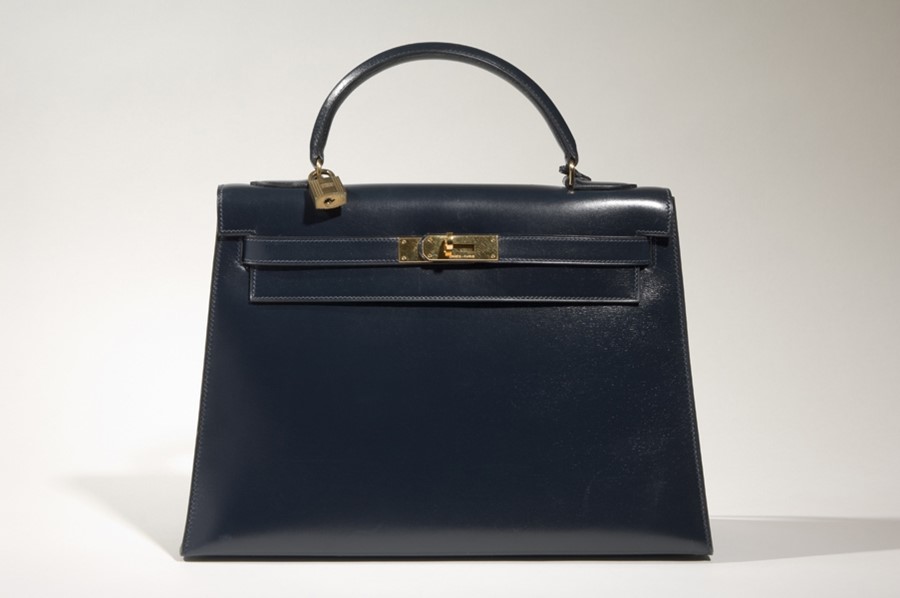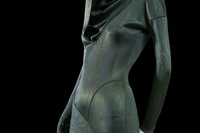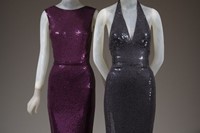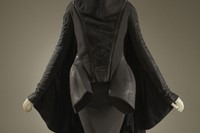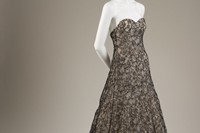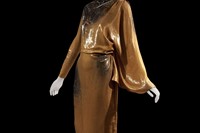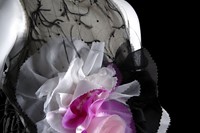The Museum at the Fashion Institute of Technology is one of the world’s leading fashion museums, long applauded for its groundbreaking exhibitions and important conservation and documentation of fashion and its history.
The Museum at the Fashion Institute of Technology is one of the world’s leading fashion museums, long applauded for its groundbreaking exhibitions and important conservation and documentation of fashion and its history. Its impressive permanent collection now comprises over fifty thousand garments and accessories, dating from the 18th century to the present day, and representing almost every revolutionary designer of the modern age with an emphasis on contemporary avant-garde fashion.
A new special edition publication by Taschen, entitled Fashion Designers A-Z, is a wonderful consideration of both the museum and its most precious and influential pieces, presented in a clever A to Z format which guides readers from one designer to the next, from Adrien, Balenciaga and Dior through Westwood, Xuly Bët, Yamamoto and Zoran, describing their legacy in the fashion world. Here, we bring you an abridged AnOther-bet to give you a taster of what the beautifully bound sartorial directory has to offer…
A for Alaïa... Couture master Azzedine Alaïa (b. 1940) is famously obsessive about shape and fit, preferring to work directly on the body, and cutting and draping his pieces himself to ensure the perfect silhouette is created. Corsetry techniques and accomplished crisscross and spiral seaming are key elements within his practice and he has been known to use up to forty individual pieces within one item of clothing to best define the body's curvature. He once said, in what could arguably define his mission statement, "The moment when a woman can show her body is so short; they have to make the most of it."
N for Norell... Norman Norell (1900-1972) was a stickler for detail, declaring in his later years, "I've spent my whole life devoted to quality." A visionary among twentieth century American designers, he popularised Empire-line dresses and the chemise dress inspired by the 1920s, his favourite era. Norell viewed his simple, rounded necklines (sometimes embellished with Peter Pan collars or bows) as his greatest contribution to fashion.
O for Owens... Rick Owens (b. 1962) pioneers a winning combination of glamour and grunge, creating "sensuous and moodily beautiful garments". He once explained, "I try to make clothes the way Lou Reed does music, with minimal chord changes, and direct. It is sweet but kind of creepy. It's about giving everything I make a worn, softened feeling."
T for Theyskens... Olivier Theyskens' (b. 1977) designs are often dreamlike in nature – at times brooding and romantic, at others delicately feminine. Much of Theyskens' success rests on the fact that he remains relentlessly true to his artistic vision, striving for passion and attention to detail and technique above all else. A black satin coat-dress from his final degree show at La Cambre, Brussels, was worn by Madonna to the 1998 Oscars after being spotted by her stylist Arianne Phillips.
H for Hermès... Hermès, the Paris-based luxury leather company was founded in 1837 by Thierry Hermès, a German Protestant immigrant, and initially produced finely wrought carriage harnesses and bridals. Now of course it is best known for its revered handbags (first introduced in 1922), alongside its perfume and clothing lines. The celebrated Kelly bag was designed in the 1930s. Initially known as the "petit sac haut á courroies", it was later renamed following Grace Kelly's appearance with one on the cover of Life magazine in 1956, which resulted in its unprecedented (and ongoing) demand.
E for Etro... Originally a luxury fabric design and manufacturing firm, Etro was started in 1968 by Gerolamo "Gimmo" Etro, and gained widespread acclaim for its beautiful prints and intricate patterning which were used by many big designers. In a New York Times interview in 1982, however, Gimmo revealed his reservations regarding the use of his fabrics, saying, "In fashion, if you work with the creators, the Armanis, the Rykiels...it is their image you give and you have to change with them. It is my product, but, when it is sold, it has their name on it." This was perhaps the motivation behind Etro's creation of his own ready-to-wear line which debuted in 1991.
R for Rodarte... Rodarte founders Kate and Laura Mulleavy (b. 1979 & 1980) are famed for their "perfect blend of aesthetics (the gruseome made beautiful) and innovation (craftsmanship elevated to art)." Their skilled craftsmanship and ornamentation is complemented by their great sense of curiosity and impressive academic backgrounds – they are Berkley majors in art history and literature, respectively – which account for their broad range of references, from Gainsborough's portraits to the Japanese horror films that inspired their A/W08 collection.
Fashion Designers A-Z is published by Taschen and is available now as a series of 6 designer editions.
Text by Daisy Woodward
